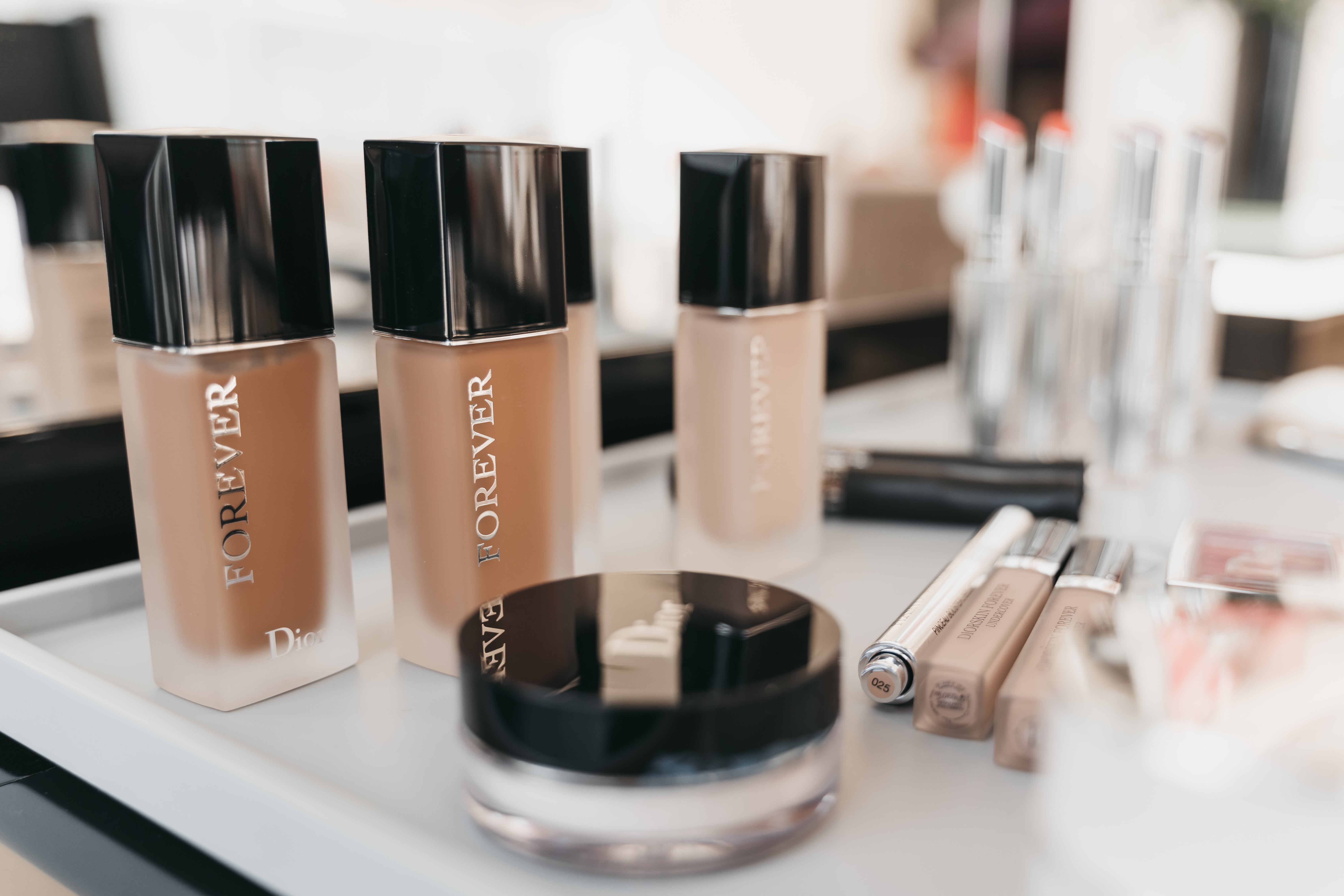Since 2002, when there was the SARS epidemic, Chinese consumers have lived to digital first lifestyle. With the ongoing impact of the pandemic, digital marketing is going forward and is believed to persist in the post-Covid era.
Irish Chan, partner at Digital Luxury Group (DLG) based in New York, previously was in China focusing on agency services, bridging the two sides of American brands, western brands over to the China market, catering more to the Chinese consumer. She shared her insights on Chinese digital marketing of DTC Cosmetics & Personal Care brand.
Which digital trends brought by the pandemic will stay in the post-pandemic world?
“The first thing that comes to mind in a very simplistic way is the use of QR codes. In New York City, there are QR codes to the menu in the restaurant,” Iris said: “But the fact is that they're everywhere and that has been a normal case in China and in Asia for many years.” QR code is going to be much more available and visible for people. To that point, it really has facilitated the digital payments that you see in a very cashless society in China. “If I don't have my phone when I'm there, I'm dead meat.” Iris Said. We're going to get to a point where that truly cashless and contactless kind of effort for those tiny little things that help to make the friction of transacting or completing some sort of journey a little bit more seamlessly. To that point, the use of a physical experience is going to be is really going to change.
Retailer is definitely going to come back, especially in the luxury space. Luxury is still definitely part of the experience of the omnichannel elements. But it's been more talked about and theorized, rather than really made into reality, and this is what's going to catalyze that to really change. We do see retail coming back brands opening up flagships, and they're really thinking differently about how layouts are going to be. What we do see in China is that the physical space is actually serving a very different kind of purpose, because they've embraced the fact and reality that your consumers are online searching for things while they're in your store, searching for other brands or your brand and other products.
So what is it going to do to be in the store? It's going to provide a different kind of element to their journey. It wasn't as much of a transition for them during the pandemic, because the digital first experiences so pervasive there. However, in Covid-19 times for beauty type of brands, they were really able to kind of get everybody their sales force online, the beauty advisors online, the seamless massive moving those resources online and offline. That's where live streaming, social selling, private selling and all of that has really driven on the platforms, and even once the market started to come back reopening in the past several months. People are still worried about going into some stores, and maybe want to shorten their experience there. So it's really about getting that convenience, picking your products, booking appointments in advance, being able to have a purpose for why you go into the store.
Those are the kind of elements that brands, whether they’re luxury or mass, are really thinking about and have already been seen to implement in the China market. It'll probably just take a little bit more time, obviously, to get it manifested, but it'll get there.
How is the potential for live streaming in China? What will be the takeaway for other markets?
Live streaming has been around for quite some time in China. “It's definitely not something that was catalyzed by Covid-19, but it definitely spurred on even more platforms participating in it.” Iris said. The platforms need to be able to facilitate that behavior while the consumers also adopt that behavior at the same time, to be able to integrate all the elements. If you look at live streaming now on a platform like Tmall, there is a lot of replay, easy kind of maneuvers to bookmark and where you are in a live streaming. The platforms themselves are at the point where they're able to facilitate these extra engagements, while Consumers are at the point as well where they can click to buy and get further discounts if they participate into some sort of activity while they're engaging into the live streaming. It's much more active on both sides and that's potentially where the live streaming can get to, to be facilitated by the platforms. That's where it's quite different from what we see in the west is that these platforms are able to capture more of the consumer journey, which means that from the top of the funnel down, you're able to kind of connect and collect all these people and move them along without having them to enter one environment and switch to another, and vice versa. Iris said: “So there is potential, but both sides need to work into that in terms of getting live streaming to a place where it's like in China.”
The pandemic has obviously accelerated omnichannel marketing, which basically means selling and marketing through new communications channels like SMS and Instagram, new vendor channels like Amazon and Walmart. What is the experience of stores in China right now? Is it more experiential or just functional like? Do Chinese brands have omnichannel digital in store features?
“In terms of omnichannel features, it definitely is in place. In terms of premium and luxury brands, I would say that the stores are always going to maintain that element of purpose in the experience.” Iris said. It ultimately means that if convenience is what that consumer is looking for, that's what the store would be able to provide. So whether it is, like ‘I want to just come in to book an appointment and get out’, or ‘I’ve selected a few products and I want to come in this time’. In the meantime, if you want to be able to have more of an experiential time in that store, and that's serving the purpose, a lot of the stores formats have kind of come in to be much more like that. Take Perfect Diary for example, which is a really well known Chinese brand. If you go into their stores, it's really all about trying things on to get that glossy experience.
Whatever you do there, it's ultimately catered to enabling what a consumer may or may not want, depending on what they need, and that's giving them that luxury premium experience. Meanwhile, those stores with the omnichannel experience are more truly connected online and offline. So what consumers re doing in the store might be browsing things. They leave, and then everything will be delivered home. It's a very seamless experience in that sense, offering experience itself and then the convenience of not having to carry things or going to a checkout and doing any of that kind of stuff.
From a brand standpoint, these are elements that allow them to be able to connect the dots in terms of what consumers are doing in the store as well as what they're doing online whether they're in the store. The point of just understanding data and behavior doesn’t mean to allow your brands to really be able to replace human capital factor of having a workforce that helps the sales experience to deliver or something personal. In fact, ultimately especially in luxury premium spaces, the personal touch is still very much necessary. But it allows for brands to provide consumers their sales force, their community managers, or whoever on site staff to be able to better serve by knowing what consumers are interested in, what they have browsed before, what they have tried on before or looked at, being able to facilitate that in true and effective way.
Personalization seems more advanced in China. Tmall, for example, is completely personalized to you if I have ever logged onto Tmall. What's happening in the China market in this area?
It is probably farther along, just as with the whole digital transformation and experience, and also just general digital savviness of consumers in China. It's a little bit different in the sense that also the idea of having to share some of your information to a brand is actually a little bit more offered that there's obviously still the question: do you want to share? In fact, consumers are more willing to share it. Personalization really takes the offline experience online. But make it really one-to-one, like delivering the message at the right time at the right place, that's exactly kind of what we are able to do with something like Wechat.
These are things where marketing automation truly delivers a real personalized experience and concierge service is also provided with their own information about the consumer, so that they can better serve what they're interested in and what kind of profile of a segment in terms of consumer they are. There is sort of a balance between things with personalization. So you do need to balance where to have some automation, and then at what point in the consumer journey that you have with their consumers and different segments where having that personalization makes the difference. That's something that has been done in China.








